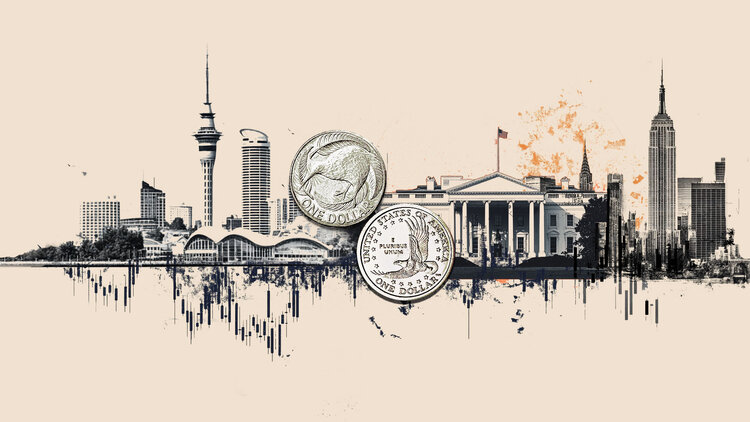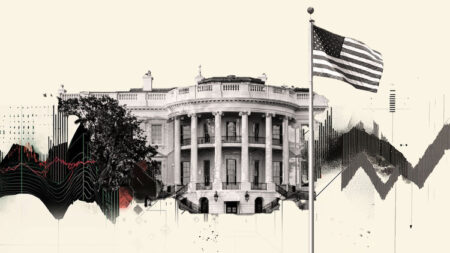- The Reserve Bank of New Zealand is expected to trim interest rate by 25 bps to 3.25% on Wednesday.
- A rate cut in May is fully priced; RBNZ updated forecasts, acting Governor Hawkesby’s presser eyed.
- The RBNZ’s policy announcements are set to ramp up the volatility around the New Zealand Dollar.
The Reserve Bank of New Zealand (RBNZ) is widely expected to lower the Official Cash Rate (OCR) by 25 basis points (bps) to 3.25% from 3.50% after concluding its May monetary policy meeting on Wednesday. The decision will be announced at 02:00 GMT and will be followed by acting RBNZ Governor Christian Hawkesby’s press conference at 03:00 GMT.
The New Zealand Dollar (NZD) is likely to experience intense volatility on the RBNZ policy announcements and a fresh set of quarterly economic projections.
What to expect from the RBNZ interest rate decision?
With an interest rate cut fully locked in, all eyes will remain on the OCR forecasts published in the Monetary Policy Statement (MPS) for further hints on the RBNZ’s path forward on interest rates.
The February MPS suggested the OCR track at 3.1% by the first quarter of 2026.
Since then, US tariff developments and uncertainty over the global economic outlook have increased the downside risks to New Zealand’s growth prospects.
Therefore, a downward revision to the OCR track to sub-3% wouldn’t surprise markets. Markets are currently pricing in a 60% chance that the RBNZ will drop the OCR to 2.75% by the end of the year, per Herald NZ.
In the April policy statement, the central bank noted, “as the extent and effect of tariff policies become clearer, the Committee has scope to lower the OCR further as appropriate.”
“Future policy decisions will be determined by the outlook for inflationary pressure over the medium term,” the statement read.
Inflation, as measured by the Consumer Price Index (CPI), rose 2.5% YoY in the first quarter (Q1), compared with the 2.2% increase seen in Q4 2024, according to the latest data published by Statistics New Zealand on April 16. The reading beat the estimates of a 2.3% rise.
The latest RBNZ monetary conditions survey showed that New Zealand’s (NZ) two-year inflation expectations rose to 2.29% in Q2 from 2.06% in Q1.
Even though the central bank has left the door open for further rate cuts, elevated inflation levels could raise questions about the timing of the next rate cut, which could happen either in July or August.
In that light, the RBNZ could switch to the data-dependency mode amid lingering uncertainty over US tariff policies.
How will the RBNZ interest rate decision impact the New Zealand Dollar?
The NZD/USD pair hit year-to-date (YTD) highs above the 0.6000 threshold on Monday in the countdown to the RBNZ event risk. The continued US Dollar (USD) weakness due to domestic fiscal concerns and US President Donald Trump’s tariffs helps the pair stretch higher.
The Kiwi pair could witness a profit-booking decline if the RBNZ explicitly signals another rate cut in July while acknowledging downside risks to the economic outlook.
Additionally, a downgrade to the OCR track for this year and the first quarter of 2026 could be clearly read as dovish, weighing heavily on the New Zealand Dollar.
On the other hand, the NZD could see the extension of the ongoing upward trajectory if the RBNZ hints at a pause in the next meeting amid concerns over sticky inflation.
Dhwani Mehta, Asian Session Lead Analyst at FXStreet, offers a brief technical outlook for NZD/USD and explains:
“Risks appear skewed to the upside for the NZD/USD pair as the 14-day Relative Strength Index (RSI) stays well above the midline. Buyers need acceptance above the 0.6000 round level for a sustained uptrend. Further up, the October 21 high of 0.6085 will be tested en route to the 0.6150 psychological barrier.”
“If the corrective decline from 2025 highs gathers steam, the initial support is aligned at the 21-day Simple Moving Average (SMA) at 0.5931, below which the 200-day SMA at 0.5877 will be threatened. On an extended downside, the line in the sand for buyers is seen at the 50-day SMA at 0.5853,” Dhwani adds.
New Zealand Dollar PRICE Last 7 days
The table below shows the percentage change of New Zealand Dollar (NZD) against listed major currencies last 7 days. New Zealand Dollar was the strongest against the US Dollar.
| USD | EUR | GBP | JPY | CAD | AUD | NZD | CHF | |
|---|---|---|---|---|---|---|---|---|
| USD | -1.26% | -1.52% | -1.19% | -1.53% | -0.41% | -1.01% | -1.67% | |
| EUR | 1.26% | -0.25% | 0.07% | -0.27% | 0.87% | 0.27% | -0.41% | |
| GBP | 1.52% | 0.25% | 0.31% | -0.03% | 1.09% | 0.53% | -0.13% | |
| JPY | 1.19% | -0.07% | -0.31% | -0.35% | 0.78% | 0.17% | -0.43% | |
| CAD | 1.53% | 0.27% | 0.03% | 0.35% | 1.14% | 0.53% | -0.11% | |
| AUD | 0.41% | -0.87% | -1.09% | -0.78% | -1.14% | -0.59% | -1.24% | |
| NZD | 1.01% | -0.27% | -0.53% | -0.17% | -0.53% | 0.59% | -0.65% | |
| CHF | 1.67% | 0.41% | 0.13% | 0.43% | 0.11% | 1.24% | 0.65% |
The heat map shows percentage changes of major currencies against each other. The base currency is picked from the left column, while the quote currency is picked from the top row. For example, if you pick the New Zealand Dollar from the left column and move along the horizontal line to the US Dollar, the percentage change displayed in the box will represent NZD (base)/USD (quote).
New Zealand Dollar FAQs
The New Zealand Dollar (NZD), also known as the Kiwi, is a well-known traded currency among investors. Its value is broadly determined by the health of the New Zealand economy and the country’s central bank policy. Still, there are some unique particularities that also can make NZD move. The performance of the Chinese economy tends to move the Kiwi because China is New Zealand’s biggest trading partner. Bad news for the Chinese economy likely means less New Zealand exports to the country, hitting the economy and thus its currency. Another factor moving NZD is dairy prices as the dairy industry is New Zealand’s main export. High dairy prices boost export income, contributing positively to the economy and thus to the NZD.
The Reserve Bank of New Zealand (RBNZ) aims to achieve and maintain an inflation rate between 1% and 3% over the medium term, with a focus to keep it near the 2% mid-point. To this end, the bank sets an appropriate level of interest rates. When inflation is too high, the RBNZ will increase interest rates to cool the economy, but the move will also make bond yields higher, increasing investors’ appeal to invest in the country and thus boosting NZD. On the contrary, lower interest rates tend to weaken NZD. The so-called rate differential, or how rates in New Zealand are or are expected to be compared to the ones set by the US Federal Reserve, can also play a key role in moving the NZD/USD pair.
Macroeconomic data releases in New Zealand are key to assess the state of the economy and can impact the New Zealand Dollar’s (NZD) valuation. A strong economy, based on high economic growth, low unemployment and high confidence is good for NZD. High economic growth attracts foreign investment and may encourage the Reserve Bank of New Zealand to increase interest rates, if this economic strength comes together with elevated inflation. Conversely, if economic data is weak, NZD is likely to depreciate.
The New Zealand Dollar (NZD) tends to strengthen during risk-on periods, or when investors perceive that broader market risks are low and are optimistic about growth. This tends to lead to a more favorable outlook for commodities and so-called ‘commodity currencies’ such as the Kiwi. Conversely, NZD tends to weaken at times of market turbulence or economic uncertainty as investors tend to sell higher-risk assets and flee to the more-stable safe havens.
Read the full article here
















